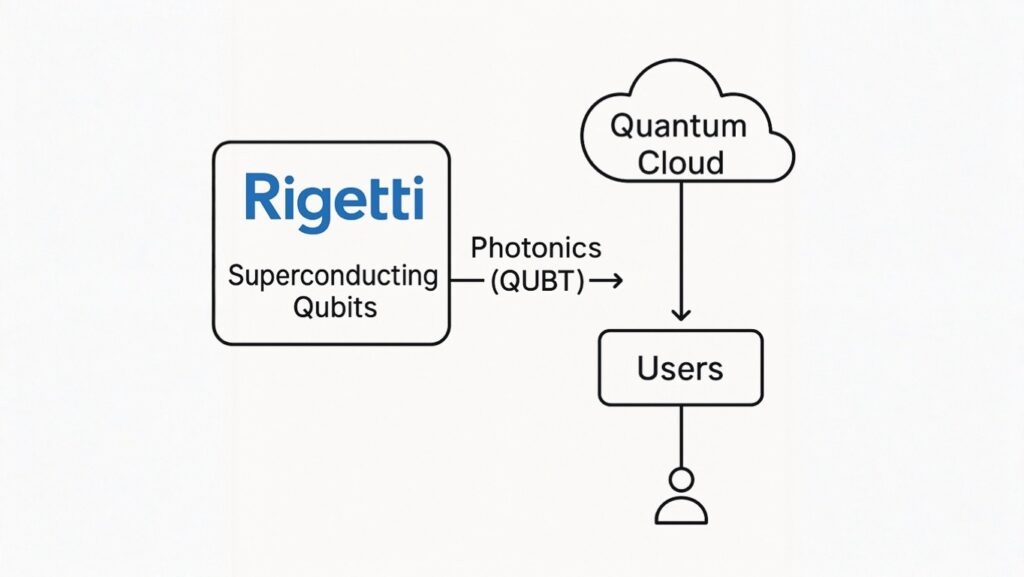A practical conversation about how superconductors and photonics can complement each other in the emerging quantum cloud ecosystem.
When we talk about quantum computing, many imagine a race with a single winner. Reality, however, is more complex. What we are witnessing is the birth of an ecosystem, in which different technologies not only coexist but complement each other. Within this context, two companies deserve attention:
Rigetti Computing and Quantum Computing Inc. (QUBT).
The Rigetti approach is centered on superconducting qubits, devices that require cryogenic conditions near absolute zero to function properly. Building and operating such hardware is costly, so Rigetti offers access through its quantum cloud. This model allows companies and researchers to send their algorithms over the internet and receive processed results, as if renting compute cycles from a highly specialized machine.
In contrast, QUBT focuses on photonics — chips that rely on light rather than electrical signals. Photonic systems promise to work at room temperature and provide energy efficiency. Their applications include quantum random number generation, cryptographic authentication, and photon-based sensors for imaging and communications.
At first glance, one might assume Rigetti and QUBT are competitors. But in truth, they are more likely to become complementary. Rigetti can be seen as the brain, delivering computational power. QUBT can be seen as the nervous system, offering pathways for communication and security. Photonics could act as “light cables”connecting superconducting qubits, enabling quantum networks across distances. It could also provide the security layer that Rigetti’s cloud needs, with random number generation and authentication tools ensuring trustworthy results.
This perspective reveals the essence of a quantum ecosystem. The future will not belong to a single technology, but to a stack of layers: superconductors for computation, photonics for connectivity and security, ion-trap systems for long coherence, and classical accelerators for hybrid approaches. Even established players like Nvidia are contributing with software frameworks to integrate all these pieces.
The lesson is clear: the quantum future is about integration and collaboration. Just as in life and in investing, progress does not come from choosing only one path, but from recognizing how different paths intersect and build something stronger together.
References and Recommended Reading

